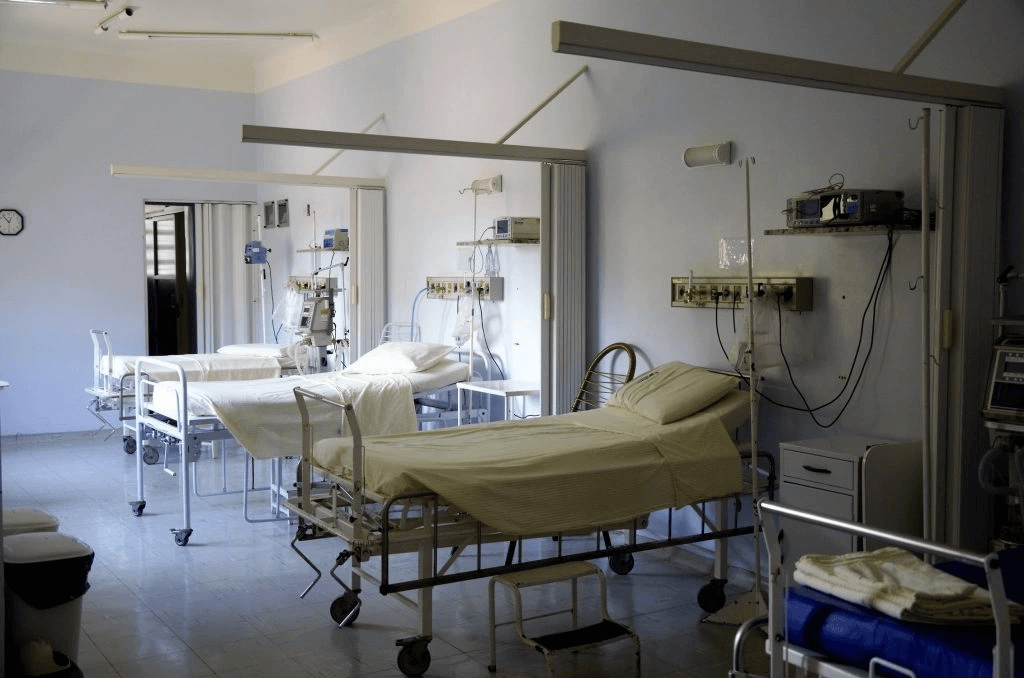Why Acoustics Matter In Healthcare Environments
Many sounds are present in hospital environments, including those from beepers, alarms, machines, rolling carts, and conversations, among other sources. These can be severely irritating and at times harmful to patients, depending on their current conditions (i.e., age, hearing ability, medication intake, cultural background, and pre-existing fears and anxieties).

Therefore, creating a comfortable acoustic environment in healthcare environments can play an important role in supporting safety, health, healing, and well-being for all occupants. Additionally, maintaining speech privacy in healthcare settings helps reduce medical errors, as it supports open conversations among patients, families, and staff and influences patient well-being. If patients are not confident that they have complete privacy, they may hesitate to provide complete information about their medical conditions and/or concerns, potentially putting their health at greater risk.
The Importance of Hospital Acoustics for Patients and Families
Poor acoustical conditions may have a negative impact on patients’ physiological health and increase their chances of being readmitted to the hospital. Acoustics can also impact perceptions of privacy, comfort, safety, and security for patients and their families. Consider the following examples of how the acoustic environment can impact the physiological and psychological well-being of patients and their families in healthcare settings:
Sudden noises can set off “startle reflexes” and can lead to grimacing, increased blood pressure, and higher respiratory rates for patients. Prolonged loud noises can lead to memory problems, irritation, impaired pain tolerance, and perceptions of isolation.
Sleep disruption and deprivation are frequently cited issues in healthcare environments. High acuity patients are especially likely to be negatively impacted by poor environmental conditions. Reduced noise levels in intensive care units (ICUs) may help patients sleep and foster a regular wake/sleep cycle.
The low-frequency noise often created by mechanical systems in hospitals can potentially be a source of annoyance and result in higher blood pressure and sleep disruption in patients.
In one study, heart attack patients exhibited higher pulse amplitudes in a poor acoustic environment than in a good acoustic environment (i.e., room with sound-absorbing surfaces) at night-time. These findings support the possibility that raised voices may have a negative impact on patients in a poor acoustic environment. This impact may be greater at night because background noise tends to be lower, making noise disturbances more noticeable and stressful.
The Importance of Hospital Acoustics for Patients and Families
Findings from research on the impact of noise on PCTs have varied. They imply that while PCTs may be able to perform tasks in an environment with a high level of noise, they may have to exert more effort to do so, in turn causing more fatigue. When inadequate acoustic conditions exist, poor psychosocial conditions can occur even for highly-trained and educated PCTs that are prepared to handle stressful conditions.
Speech intelligibility is very important to PCTs in healthcare environments. PCTs need to be able to understand and quickly respond to the many types of auditory signals (e.g., conversations, medical equipment, alarms) in hospital settings. Speech recognition systems often used in healthcare environments rely heavily on appropriate speech signals to operate and all building occupants rely on clear speech intelligibility to understand foreign languages, accents, and varying speech patterns. When speech intelligibility is not fully addressed, it may negatively impact patient care and safety.
In one study at a Swedish hospital, after acoustical ceiling panels replaced the existing sound reflective ceiling tiles in the main work area and patient rooms, nurses reported lower work demands and less pressure and strain during their afternoon shift (the noisiest shift studied).
Designing for Privacy and Confidentiality
Speech privacy needs should be assessed in spaces in healthcare facilities where patient information is shared (e.g., consultation counters, pharmacies) to assure that privacy and/or confidentiality are provided for patients, families, and PCTs.
Both the background noise level and the noise reduction created by barriers and sound-absorbing finishes need to be considered when addressing speech privacy issues in healthcare settings.
Although normal speech privacy (i.e., PI between 80% and 90%) is sufficient in most commercial settings, many patient areas in healthcare facilities require a confidential level of speech privacy. When an absolute secure level of speech privacy is required, analysis of the way the space is used, the level and amount of spoken communication anticipated how the space is constructed, and the anticipated background noise level all need to be considered.
Adequate speech privacy can be accomplished in open and enclosed spaces through the provision of single-occupancy patient rooms, private discussion areas, effective space planning, appropriate partition placement, room finish specification, and sound masking system selection. Consider the following when designing to support privacy and confidentiality in healthcare settings.
For more information on how to improve acoustics in medical facilities, contact Acoustica Projects!

